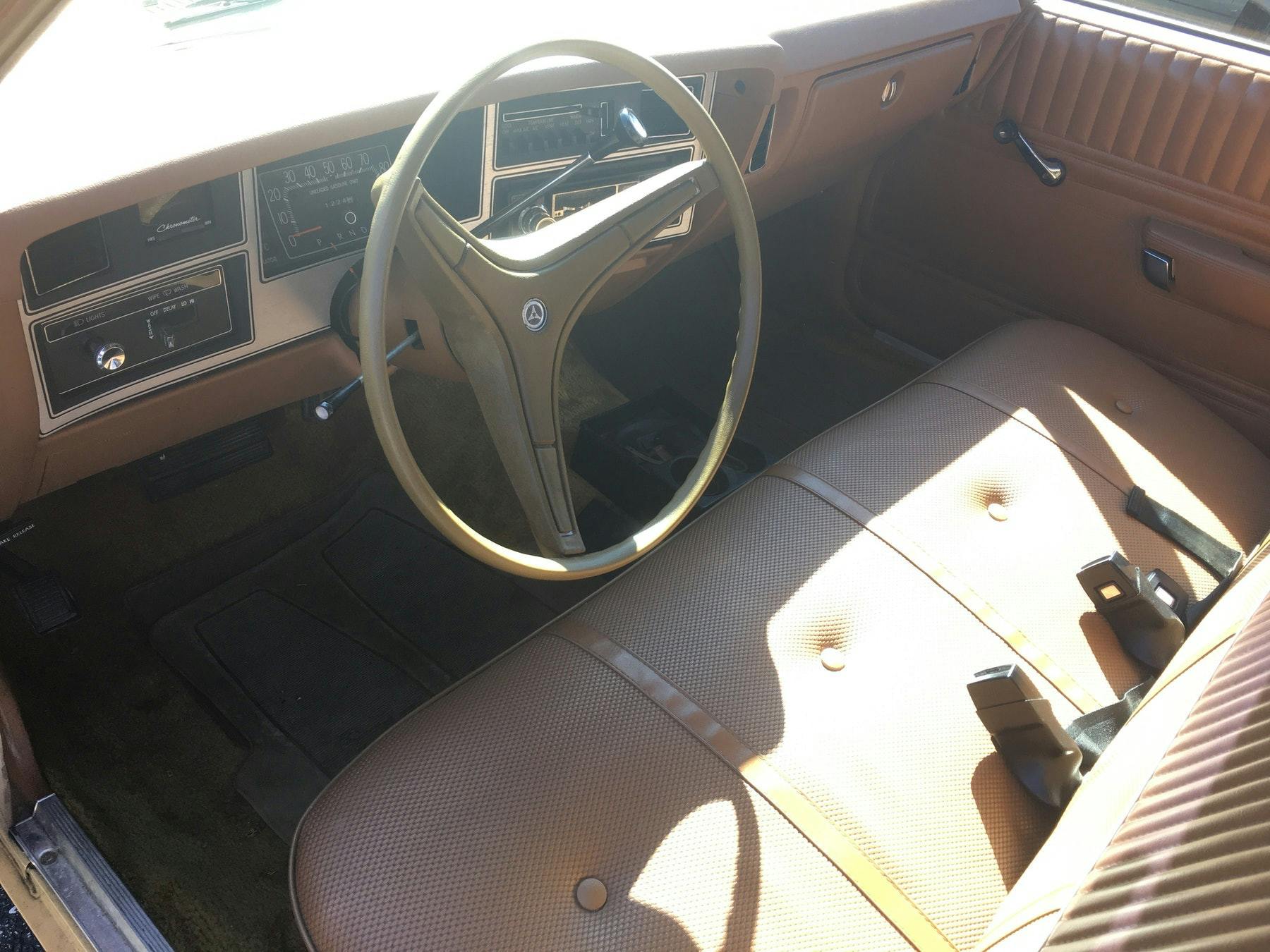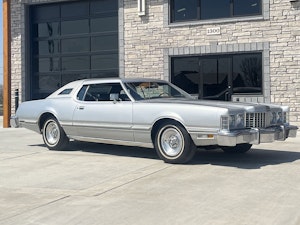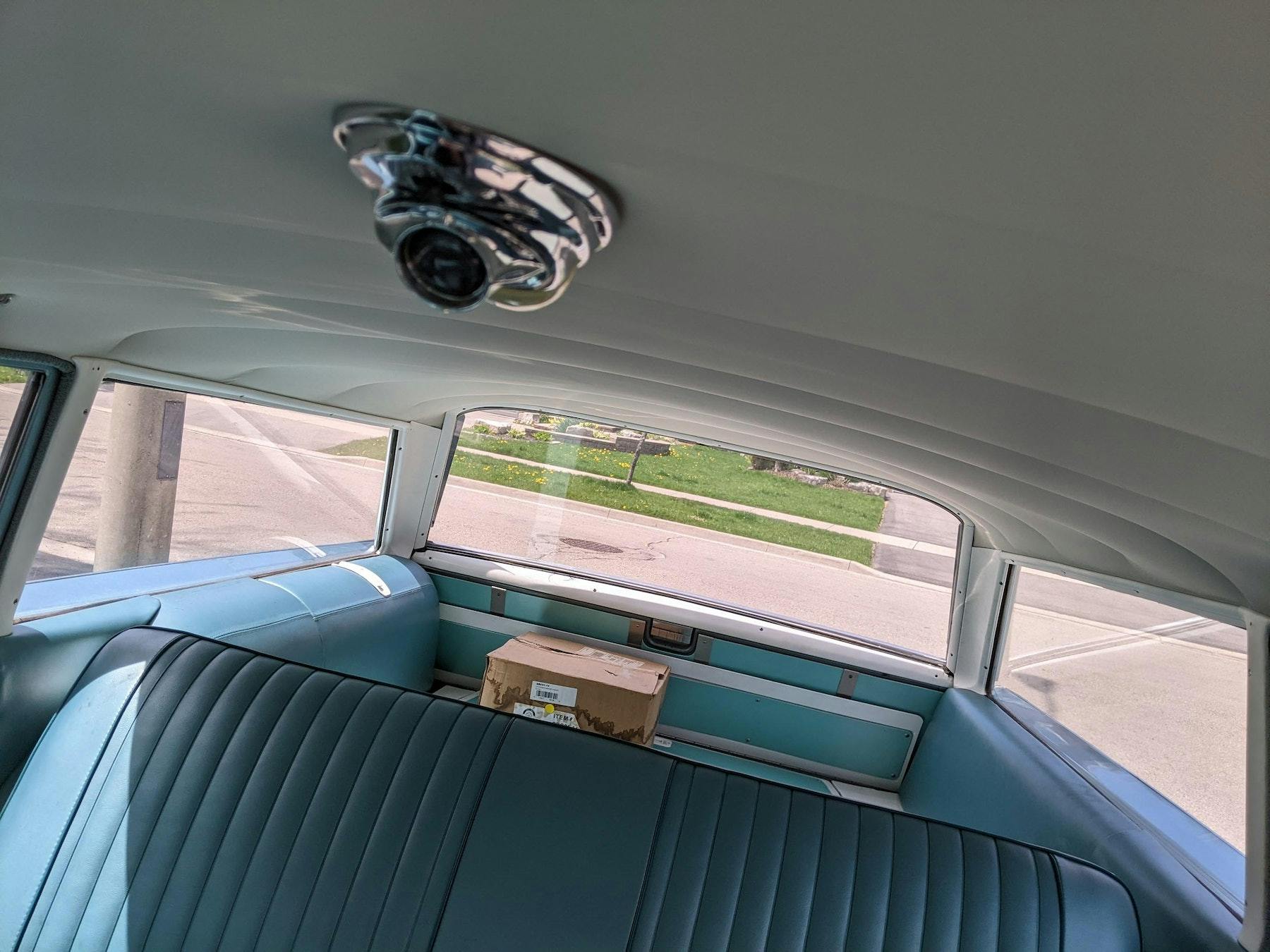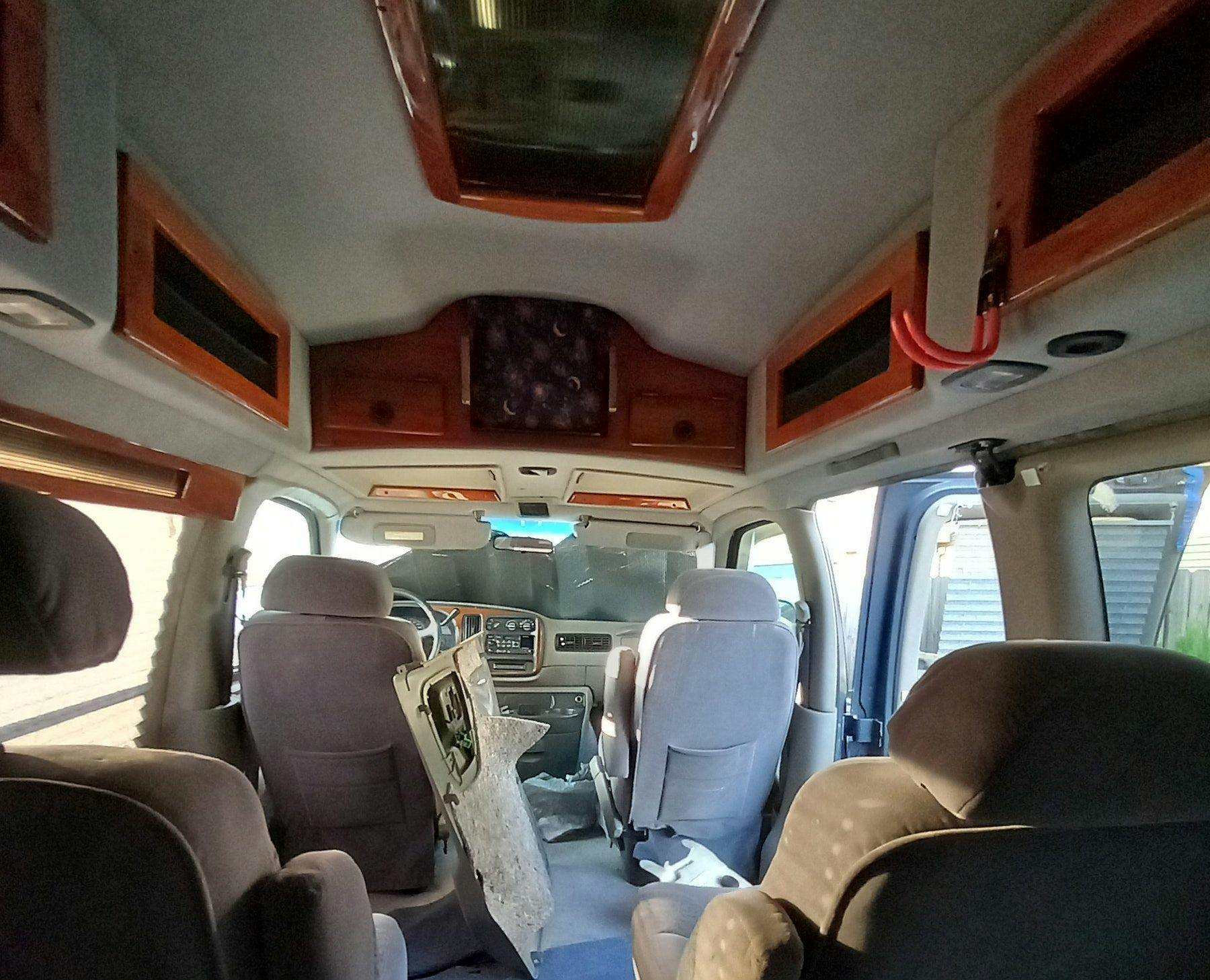Media | Articles
4 obscure “longroof” station wagons to fall in love with all over again
The automotive enthusiast community has a love-hate relationship with station wagons over time, but is it actually a hate-now-love relationship? Because what was once the butt of many a joke in the 1980s and ’90s fizzled into obscurity, only to arrive in the classic car realm with a new name: Longroof.
Indeed, the vehicles that look like a family sedan but with a far longer, far more practical roof are fully in vogue. No longer beaten down by minivans, SUVs, and crossovers, these station wagons are not only part of a bigger trend in longroof appreciation, but surprisingly obscure examples (of an already modest automotive genre) exist, surviving a seemingly-expected fate atop the scrapheap. So here are four examples of such longroofs on Hagerty Marketplace, none of which are the usual players in this space. And who doesn’t love having an obscure example of an under-appreciated automotive genre?
1978 Dodge Aspen
The Dodge Aspen and Plymouth Volaré made their mark on society with several major quality concerns, but do you remember they also came in a longroof with Chrysler’s legendary slant-six “Leaning Tower of Power” under its downsized hood? This Aspen wagon has an automatic transmission, power steering, and air conditioning. The colors are pure Malaise-era perfection, as the seller lists its hue as “Tahini Tan” with a dark tan vinyl interior.
The interior looks very clean and original, only with a bluetooth-enabled radio as both a modification and concession to modern times. The Magnum 500 rims also come with the original hub caps, making this Aspen wagon one of the best ways to embrace the downsized lifestyle of the late 1970s.
Marketplace
Buy and sell classics with confidence
1986 Pontiac Parisienne
How could a General Motors station wagon be named after female denizens of France’s capital city, be sold in the United States and Canada, and get away with it? It probably has to do with the great bones underneath and the fact that it’s a catchy name no matter what. The Parisienne started life in Canada, but became a staple in stateside Pontiac dealerships by the time it was affixed to GM’s B-body as a coupe, sedan, and (wait for it) station wagon. Offering a bit more luxury and swagger than your average Caprice Estate, but not the ostentatiousness of the Buick Electra Estate Wagon, the Parisienne Wagon was perfect middle ground in a market that was rapidly contracting after the 1984 introduction of the Chrysler minivan.
But Pontiac persisted, keeping it around with a new name (Safari) until 1989. This example from 1986 sports a rather unconventional color scheme of sleek black paint, maroon cloth, and aftermarket wood-toned vinyl with blonde highlights. The list of expected interior features includes a rear-facing third row of seating, and is propelled by a 305-cid V-8 with a four-barrel carb. The seller states that every electronic assist works as intended, aside from the radio and cruise control, which is “spotty.” Like many GM products of the era, the bumper fillers need replacement, but a set of repair manuals are included with the wagon.
1963 Pontiac Catalina Safari
Wait, we have two Pontiac station wagons on Hagerty Marketplace? While Pontiac made the previous example into a throwback “Safari” towards the end of production, this 1963 example is a better representative of what made Pontiac’s longroof more appealing in the wagon’s heyday. This particular Catalina body was a big stylistic influence for the second-generation Pontiac Tempest, which became the GTO. (You can see it most in the split grille and stacked headlights.) Who wouldn’t want a family hauler with the style and street presence of Pontiac’s seminal creation for muscle car fans around the world?
This example sports Pontiac’s 389-cubic-inch “Trophy” V-8 with the standard two-barrel carburetor and an automatic transmission. The seller states that 18,446 Catalina Safaris were built, and he has collected significant amounts of documentation to prove the vehicle’s authenticity. There’s fresh paint and a redone interior, along with a promise of further improvements, as the owner states that items “like the dome light don’t work, but I’m slowly addressing things.”
1987 Mercedes-Benz 300TD
No list of obscure station wagons for sale in America is complete without a diesel Mercedes-Benz wagon, right? But unlike your average, chrome-laden Germanic oil burner from the 1970s (the ones that put the brand on the map in America), this is a later 300TD based on the modern W124 chassis. Cutting edge at the time and still a stunning drive by modern car standards, adding a longroof and a turbo diesel engine to the W124 only makes it cooler. Maybe even cooler than the high-performance 500E?
This example has a whopping 425,000 miles but sports its original paint and interior. The owner stopped using it as a daily driver in 2013, but it comes with many restoration parts and previously serviced it with a “local Mercedes Specialist.” At this price, this W124 could make for a great project car that will take advantage of the diesel longroof’s long term profit potential, as they seemingly become even more popular over time.
HI-TOP LONGROOF: 1997 Chevrolet Express
Clearly this isn’t a wagon, but it’s one heckuva long roof. The fullsize van has one of the best ratios of roof to (engine compartment) hood in the universe, and this one has the “high top” conversion that includes enough headroom for most folks to stand up inside the van’s massive cabin. The 1995-up Chevrolet Express and GMC Savana take all the best of van culture and pair it with modern day truck hardware.
While this older example lacks the LS-series engines, the Vortec 5.7-liter V-8 is no slouch for family hauling and can easily be souped up with bolt-ons, if a hot-rod long roof is in order? This example does need some attention after 289,000 miles and 25 years on the road, but the hi-top roof has a power-operated rear bed/seat, rear HVAC, wood trim, and accent lighting under its elevated cover. You can make a scene with a longroof these days, but there’s only one way to literally raise the roof at a car show.
Check out the Hagerty Media homepage so you don’t miss a single story, or better yet, bookmark it.


















































How about the 1973 Chevelle SS station wagon, one year only.
The Goddess of all wagons is the 2 door, 1957 Pontiac Star Chief Safari!
My aunt and uncle had an Aspen wagon with the slant six and four on the floor! It was pretty economical in its day, and could haul a family and all their stuff for an extended vacation.
My parents 63 Fairlane Ranch Wagon. Still have it. 1965 Chevelle Twodrwagon. Cover of Hot Rod June 2001
My Son’s E55 Wagon. Nuff said there. Now our E63s Wagons. Oh, had the CTS V too. Killer.
Agreed: The 1957 Pontiac Safari is numero uno
A friend of my parents had a 77 Plymouth Volare. Weird car. It had a 3 speed manual transmission. It overheated all the time so he carried a bag full of thermostat “things” around so he could put a new one in when they went bad. Aside from being unreliable it was, in my opinion pretty ugly. LOL. Growing up we had a Ford Falcon Wagon. My mom was concerned about the fact that it didn’t have seat belts, and in those days many cars didn’t have seat belts. My mom was a bit safety crazy so she used rope to belt us in. OYY, Jewish mothers. The funny thing is that the car had no floor in the back. It had rotted away so we could look at the road while we drove with our feet dangling and tied in to the seats with rope. My dad wasn’t much of a fix it buy. He was a shrink, so cars really weren’t in his makeup. Those were quite the days.
There is a longstanding legend that a Falcon wasn’t broken in until you could see the road beneath you.
Like the IH Travelall, it was shocking how long they’d last after you were embarrassed to be seen in them.
Almost every car ever made looks better as a wagon because it eliminates the awkward roof to rear deck transition that is so hard to style well. I’ve always loved the Parisienne; the only thing wrong with it is that they made so few. The main problems with the Aspen was that it was rushed into production and could have really benefited from another year of development and testing, and that it was preceded by the Dodge Dart/Plymouth Duster, one of the most reliable and solid cars ever built. The Aspen definitely suffered by comparison.
My mother-in-law’s last car was an avocado green Plymouth Volare wagon. I didn’t think avocado green when I saw her coming. It was more like the puke from the girl in “The Exorcist”. After she passed away, my brother-in-law crashed the car into a tree. I think it was a mercy killing.
My Dad bought an ’85 Parisienne 4 dr Sedan. Black w/ Red velour interior. It looked and drove like a limo.
Had it for 9 months until it was stolen. Prob was shipped to another country and became a drug lords daily driver. LOL
A longtime ago (early 70s) I delivered auto parts and wagons were prime subjects. Always short money, used, and ran till they died. I remember a 67 Impala V8 white with blue interior. 2nd company owner liked Fords. I ran a few to their demise. A 68 Fairlane, 68 Country Squire with the plastic sheet wood grain. Probably the best equipped with air that didn’t work. Lastly was a 65 Fairlane 289. One of the strongest running and longest lasting. Wagons were sport utility of a different era. With that kind of early driving history my early personal rides were 70 Int, Scout, tradeup to a 83 LTD wagon. Brand new with California emission 6, and with a running start on hills. It would slow down to 45mph on the Rt 2 hill west out of Boston. I still have a preference for wagons that your story has made me aware of. Since 2000 I left behind a Tahoe, Escort 5 speed, Mazda 4000 with a cap/ wagon of sorts, Escape, and 16 CX5. At present wife’s 21 CX5 is nice but with a way to much tech for me. I rather run the 03 Escape with 212k on it. A/c still working never a check engine light. Just a700$ s/b that keeps going. It’s my ongoing project. Parts are cheep. K frame, tune up with coils and cover gasket’s. Brakes and even a rear wheel well 1/4 replacements. I now have new welding skills. And always a backyard mechanic in the rough. For the last few years I have been working to bring a 68 Jeep Commando. Good frame, running but rusty. I did enough work to drive it 100 miles home as I still don’t believe in AAA or paying for a tow. Would almost like the 83 LTD back with a 4.6 and a stick. Love your story and would like to go shopping but I have enough projects.
I am a Ford guy through and through. I owned a 78 Volare’ back in 1992 that I paid $60 for. That car WAS NO JOKE. I beat that thing like everything else I owned and it took it with pride. I literally couldn’t kill it. That memory is etched for sure.
I’d give a nod to the Volvo 1800ES
My parents bought a white 1977 Dodge Aspen wagon, with the 318 V8; brand new. It soon earned the moniker, “Ass-pain”. I remember the rusty fender recall, but it had all sorts of other issues. I’m sure the space was handy… we took it camping, etc. and riding in the back was fun (pre-seatbelt laws). They traded it in on a new 1982 Plymouth Reliant. I’m sure dad was happy to be rid of it.
We own a nice 65 Falcon station wagon ,
With the V8 ?
When was the last time you saw one of those ?
I owned a 77 Aspen with the 318 and it was a total slug , even slower with the six banger .
I’ve owned some really crappy cars . Owned the 77 Aspen in 84 , followed by a chevette , then followed by a 71 Firebird which I really liked , and was much more reliable than the Aspen.
I have always owned a station wagon. A wagon will do 98% of what an SUV will do with more style and a better ride. I have had my ’93 Volvo 945 Turbo for 25 years, it is hale and hearty with 360,000 miles and very little maintenance. I’m looking now for a 1961 Oldsmobile F85 Deluxe Wagon similar to the one that got me through my college years to restore.
Sanjeev Mehta, I am 84 and to bundle long roofs (i.e. station wagons, vans, SUVs, panel trucks, semi trailer trucks, box trucks and ANYTHING with an an expanse of roof) onto one category reminds me of the medical field when they bundled ALL breathing maladies into the COPD designation.
Station Wagons were starting to be looked down on back in the 60s (were you born yet?) by those who thought they were just so cool and the only vehicles worthy of being on the roads or streets were hot rods. Also held in disdain were minivans and, well everything that wasn’t “cool” which I already covered.
Not that it required renaming/rebranding, but the reason Station Wagons are now cool is because the crap that is now on the roads looks like crap and even a lowly Station Wagon from “back then” looks totally beautiful be comparison. They’re still Station Wagons. Just like bubble tops are Hard Tops and convertibles were not drop tops but Rag Tops (they were called convertibles, industry-wide, when produced)
When I was in my 20s, I owned a 56 Lincoln Premier convertible (a rag top) then a 60 Chrysler 300-F convertible (another rag top) then a 72 Lincoln Continental (a 4-door land yacht). They all had large engines (gas guzzlers by today’s standards but fuel was 29 cents/gallon but they would haul ass – in comfort. The 300-F would blow the doors off nearly any rod at the time).